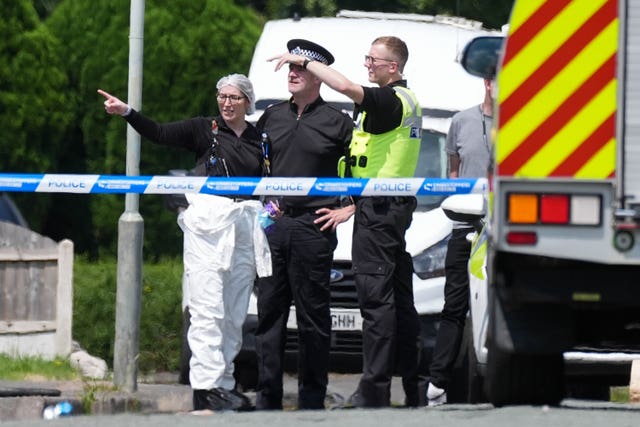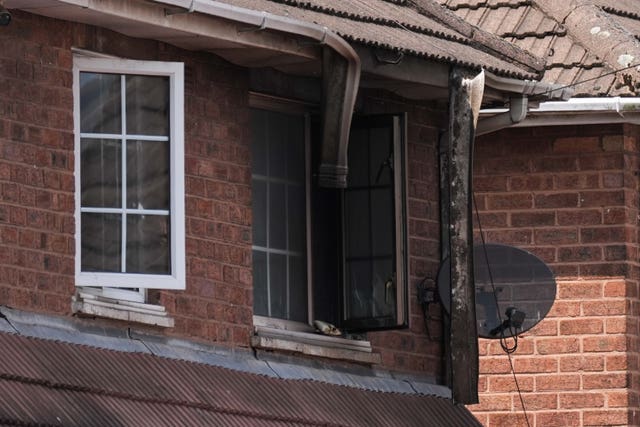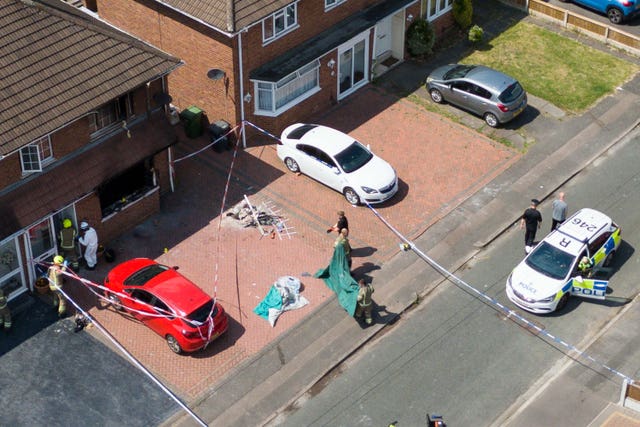DNA evidence on lighter links murder accused to Wolverhampton arson attack, court told
Daniel Tatters, 26, and Dale Francis, 37, travelled from Stoke-on-Trent to Wolverhampton to set fire to a family home, jurors have been told.
Watch more of our videos on ShotsTV.com
and on Freeview 262 or Freely 565
DNA evidence showing an “extremely strong” link to one of two men accused of launching an arson attack on a family home, killing a 26-year-old man, was found on a cigarette lighter at the scene, a jury has heard.
Prosecutors allege Daniel Tatters, 26, and Dale Francis, 37, are both guilty of murdering Akashdeep Singh, who died in hospital after a blaze at a house in Plascom Road in East Park, Wolverhampton, at about 1am on June 25 last year.

Tatters, of no fixed address, and Francis, of Clare Street, Basford, Stoke-on-Trent, deny murder, attempted murder and a charge of arson with intent to endanger life.
Opening the case at Wolverhampton Crown Court on Thursday, prosecutor Mark Heywood KC said Tatters visited the Royal Stoke University Hospital around two-and-a-half hours after a window at the fire-hit property was shattered by a hooded figure who used a container of inflammable liquid to start a fire that spread rapidly.
Tatters was treated in the emergency department for three wounds to his finger, the court heard, and told staff he had been drinking in the early hours and tripped onto a sheet of window glass in the garden.

The court heard that Francis, whose DNA was not found on the lighter, claims he owed someone under £800 and was asked “to take someone to Wolverhampton to burn out a car on the drive.”
Explaining the Crown’s case to a jury of eight women and four men, Mr Heywood said a mixed DNA profile from five contributors was found on the surface of the lighter, which was recovered around two metres away from the broken window.
Mr Heywood told jurors it was calculated that the DNA result obtained from the lighter was 67,000,000 times more likely to have originated from Tatters and four other unknown and unrelated individuals, than if the DNA originated from five unknown and unrelated individuals.
Alleging that the result showed extremely strong support for the proposition that some of the DNA profile originated from Tatters, the lawyer told the court: “The prosecution case is that the DNA was transferred to the lighter in the course of Tatters’ handling of it in order to have it to ignite the fire.”
Taking jurors through CCTV evidence set to be presented at a trial lasting up to six weeks, Mr Heywood said a hooded figure in dark clothing walked across the drive and up to the bay window at the front of the Plascom Road property.
“This figure hammered on the glass of the bay window until it shattered,” he said.
“He then tore away the interior trim and lit a container of inflammable liquid and threw it inside, starting a fire that spread beyond the living room and up the stairs.”
Mr Singh and his mother were trapped inside the property, while his father managed to escape through the back door.

Mr Heywood said fire crews wearing breathing apparatus removed Mr Singh and his mother within minutes and they were taken to hospital.
Mr Singh’s mother suffered life-changing injuries, but he died of his burns and smoke inhalation around eight hours later.
Mr Heywood said the subsequent police inquiry had established that Francis’s Volkswagen Golf had made numerous trips to the Wolverhampton area in the weeks before the blaze.
After jurors were shown CCTV of a figure running away as flames engulfed the house, the prosecutor said: “By casting the net widely for other useful CCTV footage, the police were able to connect that figure to another who had travelled with him to Plascom Road.
“It demonstrated that the two figures were these defendants.
“It appears likely that Mr Tatters actually broke the window and started the fire, but the prosecution case is that it makes no practical difference because they had acted together.”
Tatters, who was staying at an address in Sneyd Green, Stoke-on-Trent, is alleged to have gone on foot to Plascom Road after the Golf was parked in Sutherland Avenue, around a third of a mile away.
CCTV from a nearby camera showed the driver’s door of the Golf being opened minutes before two figures were seen entering East Park at a location said to be a six-minute walk to Plascom Road.
Describing the CCTV footage, Mr Heywood told the jury: “One figure can be seen approaching Plascom Road from Parklands Road, adjacent to the park.

“It can be seen that this figure, described as Profile 1, is carrying something quite sizable in their right hand.
“Profile 1 has walked past the red car parked on the left-hand side of the drive and goes straight to the front window. Profile 1 starts striking the large front living room window, smashing and clearing the glass from the frame.
“And then something was then thrown into the house, at which point a violent fire immediately ignited.”
Mr Heywood added: “We anticipate that Dale Francis’s case will be that he drove the other man, who we say was Daniel Tatters, thinking that Tatters would only set fire to a car on the drive.
“We anticipate that Daniel Tatters’ case will be that he was not present and took no part in what took place that night.
“The prosecution case is that the evidence in each defendant’s case proves otherwise.
“Their actions make it clear that, whichever one of them actually started the fire, each of them shared the intention to murder all the occupants and each assisted and/or encouraged the other to carry that out as planned.
“As to why they went to that house on that night, and as to why they did what they did, these are not matters which the prosecution need to prove. It may never be possible to know why.
“Only the would-be killers or those involved in the enterprise may know that, and for obvious reasons, you may think, they would never reveal it.”
The trial continues.





